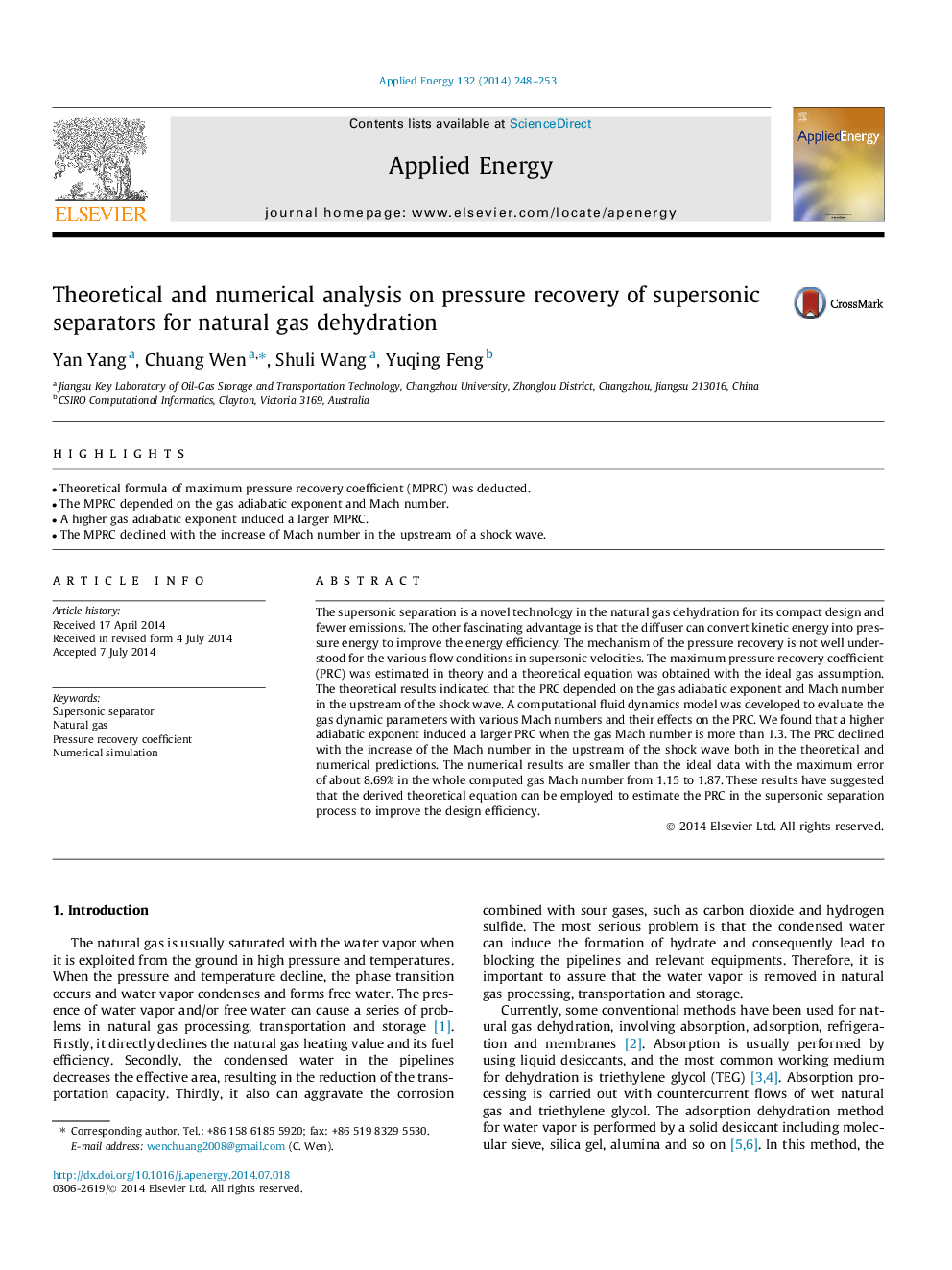| Article ID | Journal | Published Year | Pages | File Type |
|---|---|---|---|---|
| 6689745 | Applied Energy | 2014 | 6 Pages |
Abstract
The supersonic separation is a novel technology in the natural gas dehydration for its compact design and fewer emissions. The other fascinating advantage is that the diffuser can convert kinetic energy into pressure energy to improve the energy efficiency. The mechanism of the pressure recovery is not well understood for the various flow conditions in supersonic velocities. The maximum pressure recovery coefficient (PRC) was estimated in theory and a theoretical equation was obtained with the ideal gas assumption. The theoretical results indicated that the PRC depended on the gas adiabatic exponent and Mach number in the upstream of the shock wave. A computational fluid dynamics model was developed to evaluate the gas dynamic parameters with various Mach numbers and their effects on the PRC. We found that a higher adiabatic exponent induced a larger PRC when the gas Mach number is more than 1.3. The PRC declined with the increase of the Mach number in the upstream of the shock wave both in the theoretical and numerical predictions. The numerical results are smaller than the ideal data with the maximum error of about 8.69% in the whole computed gas Mach number from 1.15 to 1.87. These results have suggested that the derived theoretical equation can be employed to estimate the PRC in the supersonic separation process to improve the design efficiency.
Related Topics
Physical Sciences and Engineering
Energy
Energy Engineering and Power Technology
Authors
Yan Yang, Chuang Wen, Shuli Wang, Yuqing Feng,
